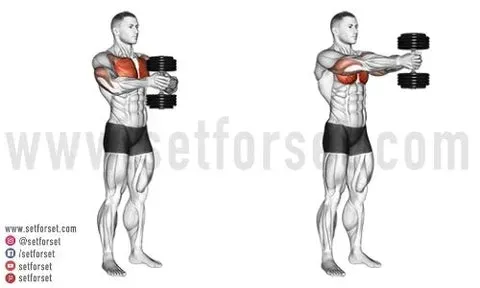Table of Contents
Alright, let's talk chest day. You're at home, maybe you've got some dumbbells, maybe just your own two feet, but definitely no bench. Does that mean your pecs are doomed to mediocrity? Absolutely not. Forget lying flat on your back; you can build a solid, strong chest standing up. A standing chest workout at home isn't just a fallback; it's a legitimate way to challenge your muscles, engage your core, and get a serious pump without taking up half your living room floor.
Why a Standing Chest Workout at Home Makes Sense
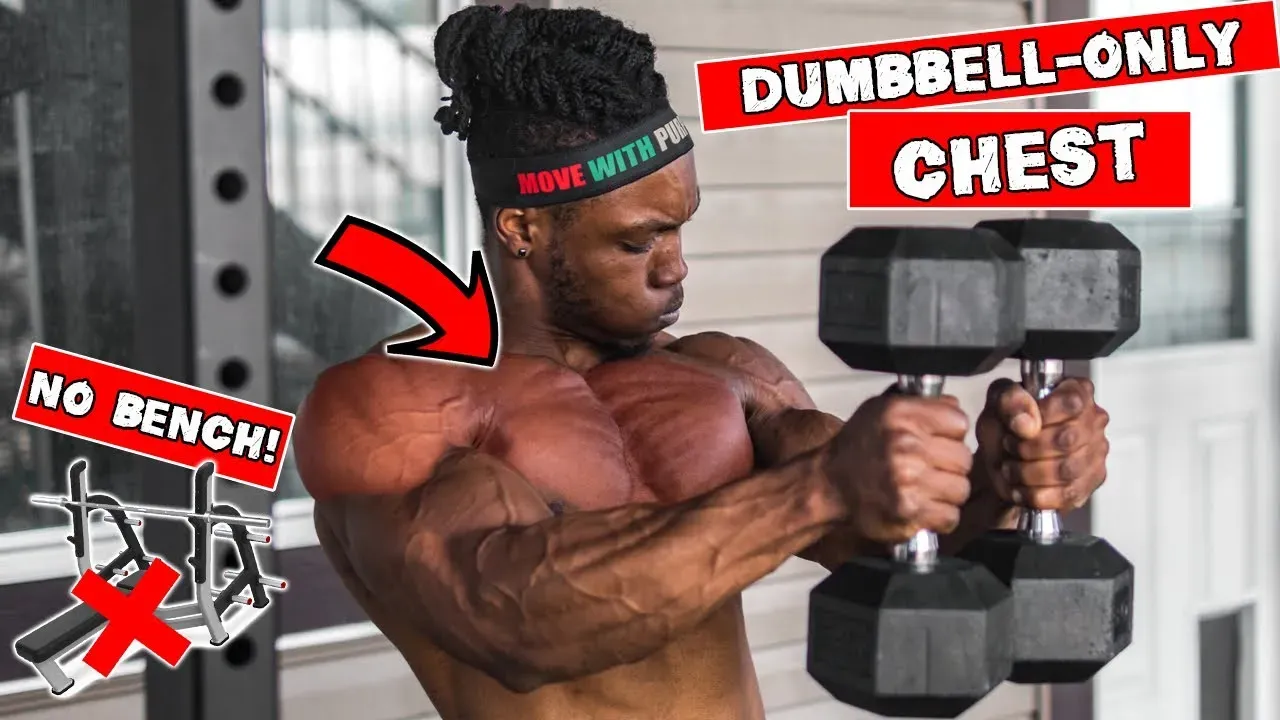
Why a Standing Chest Workout at Home Makes Sense
Convenience is King (and Queen)
Let's face it, getting to the gym is a whole production sometimes. Traffic, finding a parking spot, waiting for equipment – it all adds up. And if you're trying to squeeze in a quick session during lunch or before the kids get home, time is precious. A standing chest workout at home cuts out all that hassle. You literally just need some space to move. No bench required means no lugging heavy equipment around your house or trying to fit a bulky bench into a cramped apartment. It’s about making fitness fit into your life, not the other way around.
Think about it: you decide you have 20 minutes free. You can be warmed up and halfway through your workout in the time it takes some people to find matching socks for the gym. This accessibility makes consistency way easier to maintain, which is honestly half the battle when it comes to seeing results. Plus, nobody's hogging the dumbbell rack when your gym is your living room.
Engage More Than Just Your Pecs
When you're standing, your body works differently than when you're lying flat. Suddenly, your core isn't just chilling out; it's actively engaged to keep you stable. Your legs and glutes are also working to maintain your posture. This isn't just a chest exercise anymore; it's a more functional movement that mimics how you use your body in real life. Pushing a heavy door open or bracing yourself against something – you're usually standing, right?
By incorporating these stabilizing muscles, you're building a more integrated kind of strength. It’s not just about pushing weight away from your body; it’s about controlling that movement from head to toe. This can translate to better balance, improved posture, and a stronger core overall. It’s like getting bonus points for every rep.
- No bench needed: Save space and money.
- Time efficient: Workout whenever, wherever.
- Full-body engagement: Works core, legs, and stabilizers.
- Functional strength: Builds strength for everyday tasks.
- Consistency boost: Easier to stick to a routine.
Busting the Bench Press Myth
For decades, the bench press has been held up as the ultimate chest exercise. And sure, it’s effective. But it’s not the *only* way, or even necessarily the *best* way for everyone, especially if your goal is overall fitness and functional strength rather than competitive powerlifting. A standing chest workout at home proves you can build impressive pecs using bodyweight or dumbbells without ever lying down.
Exercises like standing cable flies (or resistance band flies), standing dumbbell presses, and even advanced push-up variations performed against a wall or sturdy surface hit the chest muscles effectively. Varying the angle and resistance challenges the muscle fibers in new ways, promoting growth and strength. Don't let the lack of a bench be your excuse; see it as an opportunity to explore different, potentially more beneficial, movements.
What You Need for Your Standing Chest Workout at Home
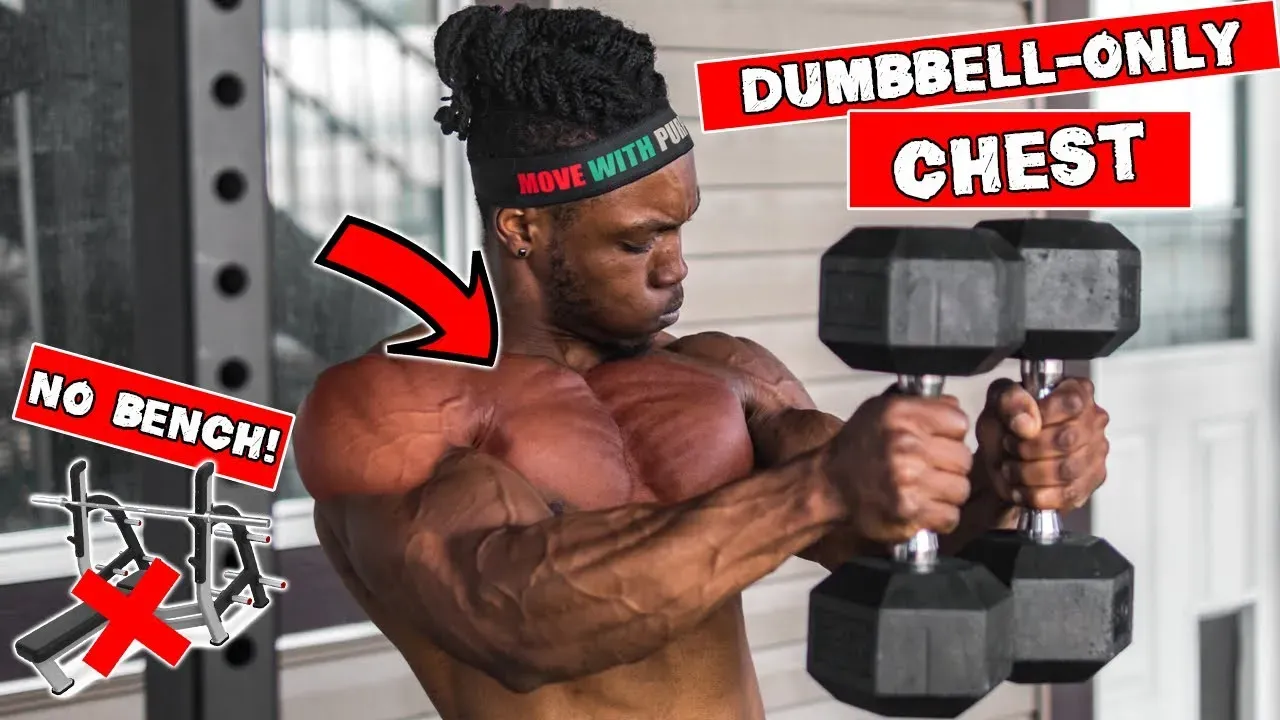
What You Need for Your Standing Chest Workout at Home
Minimalist Approach: Just You and Gravity
let's get real. You don't need a home gym that looks like a spaceship cockpit to get a solid standing chest workout at home. For starters, your own bodyweight is a powerful tool. Think about variations of push-ups performed against a wall, a counter, or even a sturdy chair. These aren't just for beginners; by adjusting your angle to the surface, you can make them incredibly challenging. Standing push-aways from a wall, leaning into it, or even decline push-ups using a stable elevated surface all hit the chest effectively while you remain upright.
The beauty of bodyweight is its accessibility. You can literally do these exercises anywhere, anytime. A hotel room, a small apartment, even a park bench (though maybe people will look). It's about using what you have and getting creative with angles and leverage. This foundational approach is excellent for building muscle endurance and mastering the basic movement patterns before adding external resistance.
Adding Resistance: Dumbbells or Bands
If you've got a pair of dumbbells lying around, you just leveled up your standing chest workout at home. Even a light to moderate set can provide significant resistance for exercises like standing dumbbell presses, front raises (which hit the upper chest), and various fly variations. The key here is control. Since you're standing, you can't just rely on a bench for support; you need to actively stabilize the weight, which, as we talked about, engages more muscles.
Resistance bands are another fantastic, portable, and affordable option. They provide accommodating resistance, meaning the tension increases as you extend the band, which can be a unique stimulus for muscle growth. Band pull-aparts, standing chest presses (anchored behind you), and band flies are all excellent additions to your standing chest workout at home arsenal. Plus, bands take up virtually no space, making them perfect for small living areas.
- Bodyweight: Wall push-ups, incline push-ups, decline push-ups (using furniture).
- Dumbbells: Standing presses, front raises, various flyes.
- Resistance Bands: Band presses, band flyes, band pull-aparts.
- Sturdy Furniture: Chairs, counters, walls for support or incline/decline.
Leveraging Your Surroundings: Furniture and Walls
Look around your home. You probably have built-in workout equipment everywhere. A sturdy wall is perfect for standing push-aways or anchor points for resistance bands. A counter or table can serve as an elevated surface for incline push-ups, making the movement easier, or for standing dips (if it's really stable) to target the lower chest. A chair can be used for incline or decline push-ups, or even supported single-arm dumbbell work if you need a little balance assist.
Just make absolutely sure whatever you're leaning on, pushing against, or anchoring to is stable and can support your weight. Nobody wants a trip to the emergency room just because they tried to do dips off a flimsy stool. Use common sense, test the stability first, and you'll find that your home offers plenty of opportunities for a challenging standing chest workout without needing specialized gear.
Essential Standing Chest Workout at Home Exercises
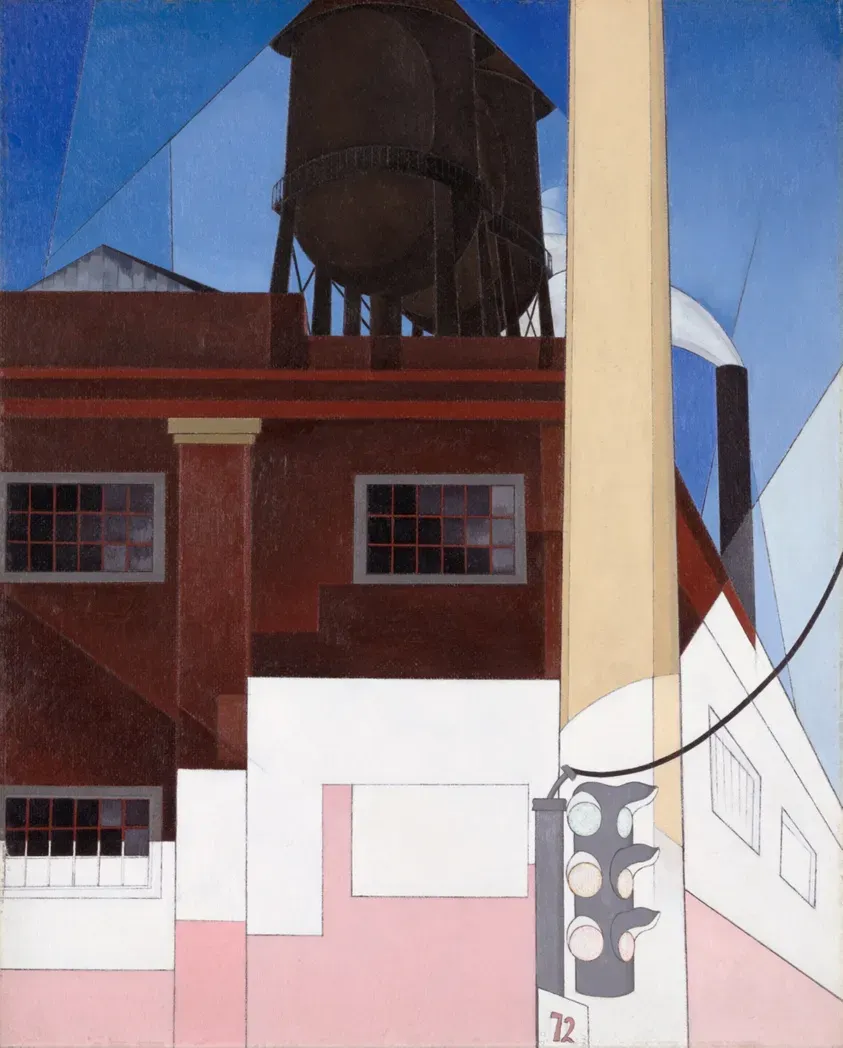
Essential Standing Chest Workout at Home Exercises
Press Away: The Standing Dumbbell or Band Press
so you've got some weight, whether it's iron or elastic. How do you actually push it standing up? The standing press for your chest is a game-changer for a standing chest workout at home. If you have dumbbells, hold one in each hand at shoulder height, palms facing forward or slightly angled in. Brace your core – seriously, cinch it up like you're about to get punched – and press the weights straight out in front of you, slightly upwards, squeezing your chest at the top. Think about bringing your biceps together. Lower them back down slowly, controlling the weight the whole way. If you're using a band, anchor it behind you at chest height or slightly lower. Grab the handles or ends, step forward to create tension, and perform the same pressing motion. The band will fight you more at the end range, which is awesome for building strength through the full movement.
Open Wide: Standing Cable or Band Flyes
Flyes are crucial for hitting the chest from a different angle and really isolating those pecs. For a standing chest workout at home, bands are often easier to set up than trying to rig up cables. Anchor a band behind you, ideally around shoulder height or slightly lower. Hold an end in each hand, step forward to create tension, and with a slight bend in your elbows, bring your hands together in front of your chest in a sweeping arc motion. Imagine you're hugging a giant tree. The key is to feel the stretch in your chest at the starting position and a strong contraction as your hands meet. Control the return trip back to the start. This movement is fantastic for carving out that inner chest line and working the pec fibers responsible for adduction (bringing your arms across your body).
- Standing Dumbbell Press: Hits the bulk of the chest, engages core.
- Standing Resistance Band Press: Similar to dumbbell press, accommodating resistance.
- Standing Resistance Band Flye: Isolates the pecs, works adduction.
- Wall Push-away: Bodyweight option, adjustable difficulty based on angle.
- Incline Push-up (using furniture): Targets lower chest with bodyweight.
Bodyweight Power: Wall Presses and Incline Push-ups
No weights? No problem. Your bodyweight is plenty for an effective standing chest workout at home. The simplest variation is the wall push-away. Stand facing a wall, place your hands slightly wider than shoulder-width apart on the wall at chest height. Lean into the wall, bending your elbows, keeping your body in a straight line. Push back to the starting position, squeezing your chest. The closer your feet are to the wall, the easier it is; step your feet further back for more challenge. To target the lower chest, find a sturdy piece of furniture like a counter or table. Place your hands on the edge, slightly wider than shoulder-width, and perform push-ups with your body at an incline. This is an incline push-up, and it shifts the focus downwards. Remember to keep your core tight and body straight throughout the movement.
Putting Together Your Standing Chest Workout at Home Routine

Putting Together Your Standing Chest Workout at Home Routine
Designing Your Standing Pec Session
so you've got the moves down – the presses, the flyes, maybe those tricky wall variations. Now, how do you stitch them together into an actual standing chest workout at home that makes your chest muscles remember why they exist? It's not rocket science, but it does require a little structure. Think about hitting your chest from different angles. Start with a compound movement that allows you to use the most weight or resistance, like the standing dumbbell or band press. This lets you move the most load when you're freshest. Follow that with an isolation exercise, like standing band flyes, to really zero in on the pecs and get a good squeeze. If you're going purely bodyweight, sequence from the hardest variation you can manage (like incline push-ups using a sturdy chair) to easier ones (like wall push-aways) to fatigue the muscle thoroughly. Aim for 3-4 sets per exercise, typically in the 8-15 rep range depending on your goal – lower for strength with heavier weight/resistance, higher for endurance with lighter options. Rest times should be kept relatively brief, say 60-90 seconds, to keep the intensity up and the workout efficient.
Maximizing Results from Your Standing Chest Workout at Home
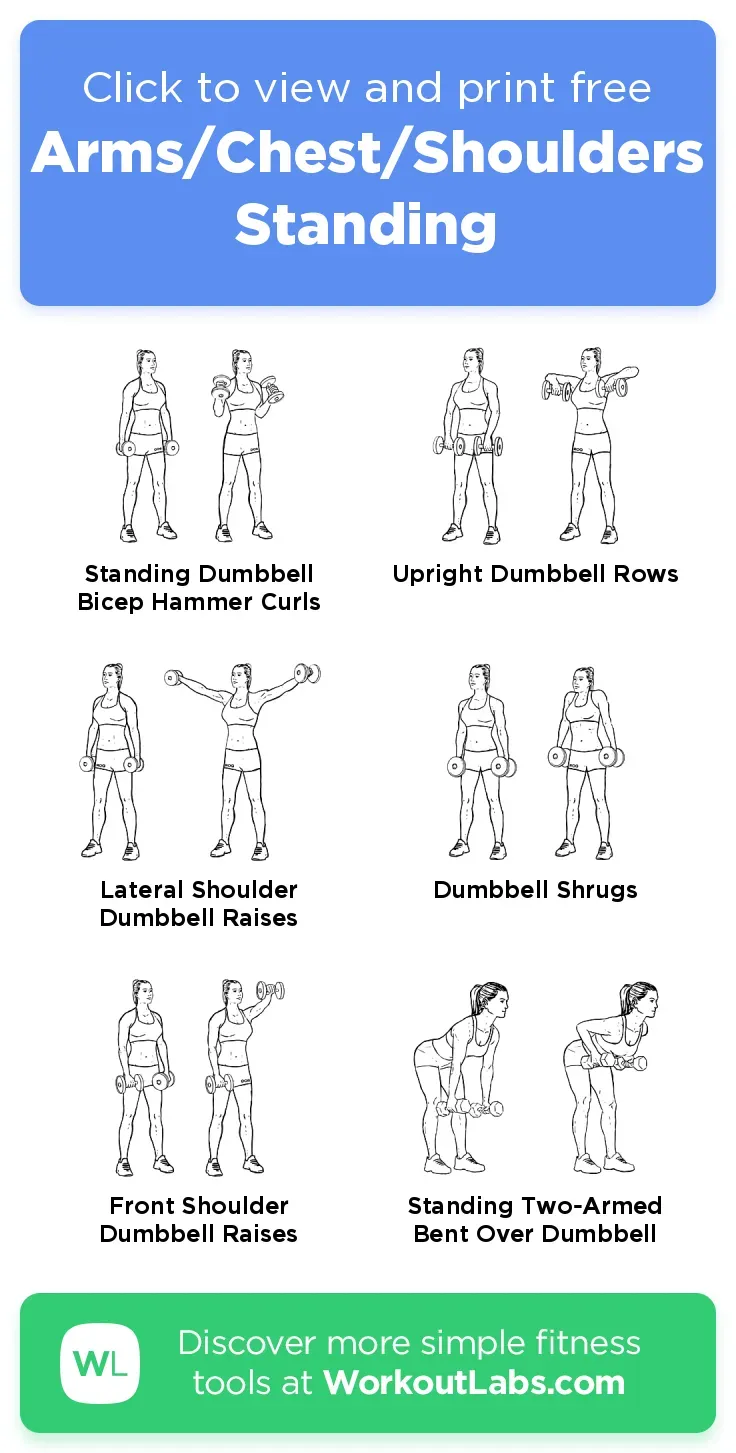
Maximizing Results from Your Standing Chest Workout at Home
Consistency and Progression are Your Allies
Getting results from any workout, including your standing chest workout at home, boils down to two things: consistency and progression. You can't just do it once a month and expect your chest to magically inflate. Aim for 2-3 chest workouts per week, allowing a day of rest in between for muscle recovery. Within those workouts, you need to challenge yourself over time. This doesn't always mean adding more weight if you're using dumbbells or bands. It could mean doing more reps with the same weight, performing the exercises slower and with more control, decreasing the rest time between sets, or trying a more difficult variation of a bodyweight exercise. Maybe you start with wall push-aways and eventually work towards incline push-ups using a sturdy table. Always strive to do a little better than your last session, whether that's one extra rep, one less second of rest, or slightly cleaner form. That consistent effort, pushing the boundary just a bit each time, is where the magic happens for muscle growth and strength gains.
Standing Tall, Building a Strong Chest
So there you have it. Building a capable chest doesn't require a gym full of equipment or even a bench. By incorporating a standing chest workout at home into your routine, you've discovered how to leverage gravity, bodyweight, and perhaps a few simple tools to challenge your pecs effectively. These exercises not only work your chest but also demand more from your core and stabilizers, leading to a more functional strength. Consistency and proper form remain your best allies. Stick with it, push for progress, and you'll see that standing up is a powerful way to build a chest you can be proud of.
